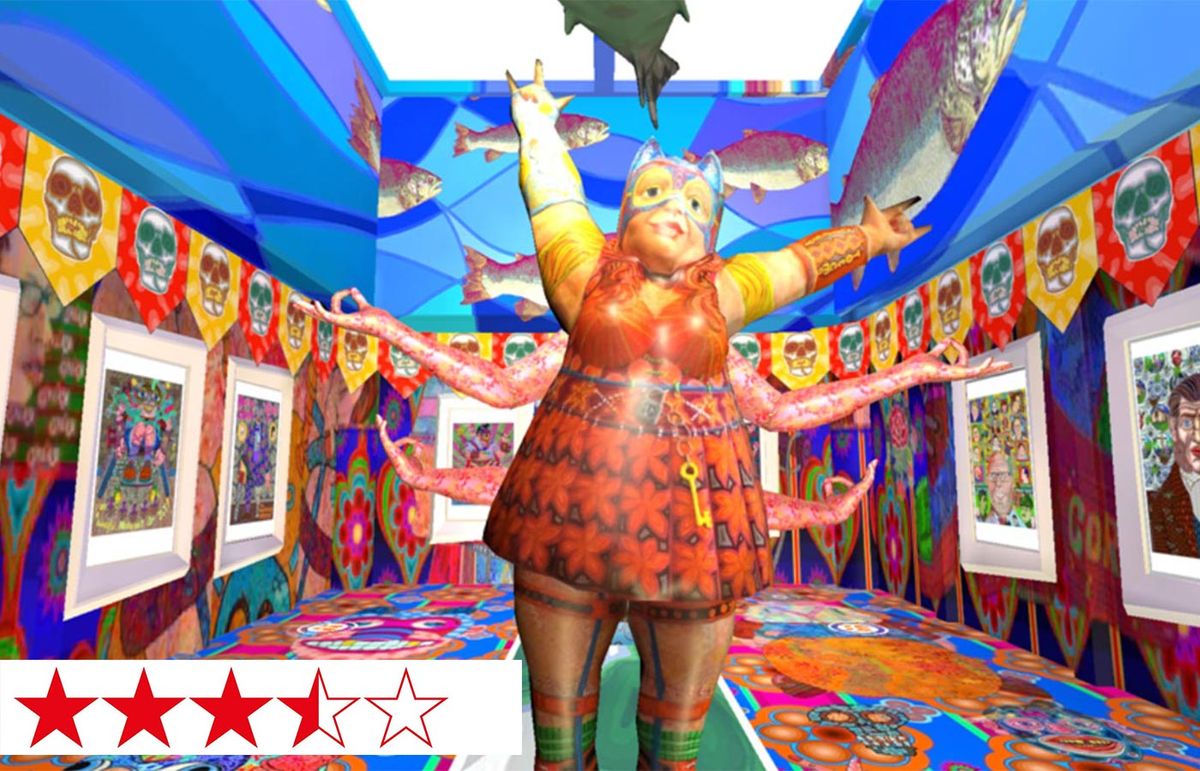What is it?
Unfolding Shrines is an exhibition produced by Shape Arts, in collaboration with Hot Knife Digital Media, where four artists—Jason Wilsher-Mills, Sophie Helf, Rebekah Ubuntu, and Uma Breakdown—present art in augmented reality.
Shape Arts is a disability-led arts organisation, based in London, which works to improve access to culture for disabled people by providing opportunities for disabled artists
They say
The imagination of the marginalised has always tended toward the ‘radical', steered by the palpable need to create something new where the old is unfit for purpose. Where outdated systems have failed, might these radical redesigns proffer alternative futures?Shape Arts
Shape Arts: We have seized this opportunity to chronicle the worlds dreamed up through this time of discontent; the augmented realities of marginalised creatives. In these rooms of tender tribute, four artists have built unfolding shrines; to people, places, and ideas that have revealed their importance against a backdrop of disruption.
The imagination of the marginalised has always tended toward the ‘radical,’ steered by the palpable need to create something new where the old is unfit for purpose. Where outdated systems have failed, might these radical redesigns proffer alternative futures?
As you experience these landscapes, allow these augmented realities to seep into your own as the walls around you expand.
We say
Just like that, still sitting on the couch in my Seoul, Korea, apartment, I’m transported to the New York streets, eavesdropping on incoherent bits of other people’s conversations as I walk past them and encountering curiously artistic objects at random street corners.Seol Park
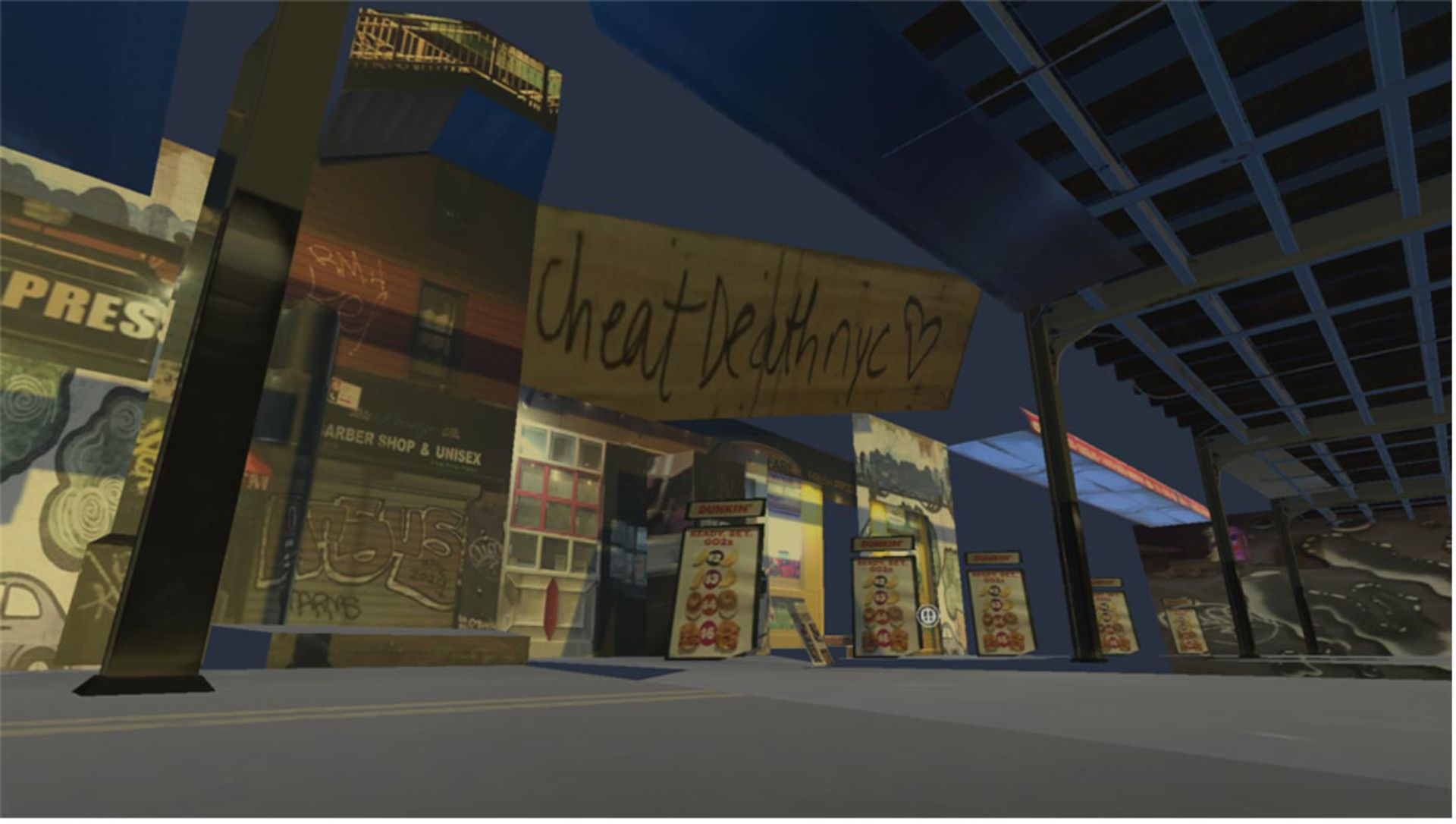
Exactly like New York City: Sophie Helf’s Myrtle Avenue
Seol Park: Jason Wilsher-Mills has now “truly embraced the pixel,” reads the artist’s biography. Wilsher-Mills is the recipient of the Adam Reynolds Award programme at Shape Arts, a disability-led organisation breaking barriers to creative excellence and organiser of the augmented reality exhibition Unfolding Shrines. The show came to be largely due to his desire to create and connect during the pandemic: “I decided to do something so I could engage with all the disabled people I used to support who are cut off during the pandemic. I wanted to find a way to share my artwork and ideas. I was an early adopter of technology as it suits my disability and enables me to do things on a much bigger scale than I could normally. This is what led me to work with Hot Knife Digital to create an augmented reality platform to exhibit my work… It’s also enabling us to include other artists now, as well as in the future,” recalls the artist.
These words resonate with all of us more strongly today than ever before in two aspects: when it comes to creating without constraints and when it comes to sharing the creations and experiencing connection with others in an altered reality. As I was reading Wilsher-Mills’s statement, I was reminded of how I felt the first time I discovered AR back in 2015 and how it led me to evangelise the technology within my creative community and produced a group show. It felt so… freeing to be able to create expressions belying certain constraints of the physical world, such as gravity, distance, and temperature. I saw that effect in other creators’ embracing of the AR, too. The technology and its creator base have expanded greatly since, and the pandemic made it all the more meaningful to an increasing number of creators.
Unfolding Shrines presents four distinctly different augmented spaces by Jason Wilsher-Mills, Sophie Helf, Uma Breakdown, and Rebekah Ubuntu (with Jaime Peschiera).
Of the works presented, I lingered mostly inside Sophie Helf’s Myrtle Avenue. Helf created a dimly lit street scene below the M train overpass somewhere in the Bushwick neighborhood of New York. It’s late night. I hear the M train whirr as I look around the dark and desolate street. A barber shop. A deli. Graffiti. Trash. Dunkin. It is then that I encounter the flickering phrases from the artist floating in front of the closed barber shop, whispering that she relishes the sound of the M train, that she cheated death in New York, and that she misses someone. Just like that, still sitting on the couch in my Seoul, Korea, apartment, I’m transported to the New York streets, eavesdropping on incoherent bits of other people’s conversations as I walk past them and encountering curiously artistic objects at random street corners. Helf’s Myrtle Avenue feels exactly like New York, and I realise how much I’ve missed all of it since leaving the city six months ago.
Unfolding Shrines delivers enjoyable AR experiences overall, though the technical prowess and conceptual maturity of the presented works vary. I look forward to seeing future editions of this initiative unfold with a more developed curatorial vision.
Is it accessible?
The inclusion of elaborate audio descriptions of the AR works is a massive advance over all other XR works we’ve reviewed over the past year.Eron Rauch
Carole Chainon: The app is free and available on both iPhone and Android, and there is an audio description of each experience in consideration for the visually-impaired.
Dhiren Dasu: It was a seamless install on my Android phone. I also saw an IoS link. So all smartphone users are covered—essentially universal access.

In Mansions of Mist 1 (2021), Uma Breakdown references the Pyramid Head character from the Silent Hill horror game franchise
Eron Rauch: Unfolding Shrines' inclusion of elaborate audio descriptions of the AR works is a massive advance over all other XR works we’ve reviewed over the past year. I don’t have a broad frame of reference for comparison, but the audio walkthroughs are quite compelling. The narrator gives a performance that was a nicely emoted and flowing conjuration of the experience without being melodramatic. The audio descriptions even included multiple key details that were quite hard to suss out in the AR experience of the works, such as the way Sophie Helf constructed Myrtle Avenue (also the title of one of my favourite Floating Points tracks) via some documentation of the site but reconfigured in ways to warp and remix the real space. However, these descriptions contained curious omissions, including missing a major reference point for Uma Breakdown’s work: the humanoid figure is Pyramid Head, one of the most recognisable monsters from the major horror video game franchise Silent Hill. This de-links the work from its context around DIY and queer reworkings of horror and adventure game tropes, such as that of Kitty Horrorshow’s oeuvre and Extreme Meatpunks Forever.
From a critical, art historical standpoint, how good is the art? In what ways does it continue important conversations in art history?
Jason and his Argonauts is a delightful experience. I liked the sense of childlike magic of the environment.Dhiren Dasu
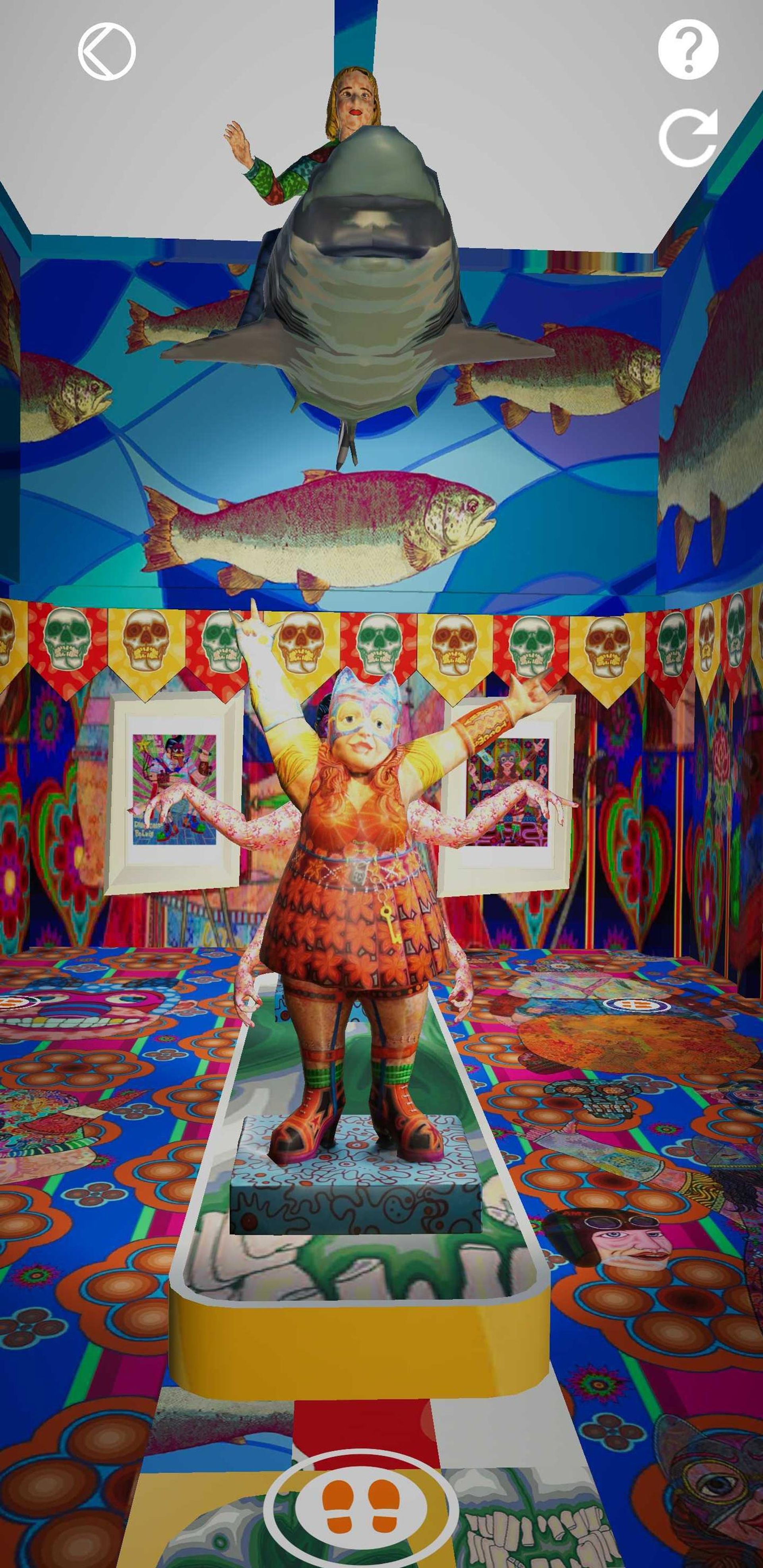
Memorable, impactful and fun: Jason Wilsher-Mills’s Jason and his Argonauts
Carole Chainon: The experiences are memorable, impactful and fun. Jason Wilsher-Mills’ AR portal is distinct, colourful and makes us ponder on our own mobility. Sophie Helf brings us under the M train In New York City and the use of sounds convincingly immerses us in Helf’s exploration of space and memory. Rebekah Ubuntu reminds us of the urgent need to act on climate change. Her artwork is striking and effective, inviting us to take action, while Uma Breakdown’s aesthetics and music bring a soothing end to Unfolding Shrines.
Dhiren Dasu: Jason and his Argonauts is a delightful experience. I liked the sense of childlike magic of the environment. His portraits were compelling and interesting. Rebekah Ubuntu's Despair, Hope & Healing was very successful. The feeling of the impending future and the stark warning translates. I felt that the quality of the rendering of the skyscape could be better.
Eron Rauch: The works in Unfolding Shrines draw a clear connection from AR to the long history of installation art, though the phrase “site unspecific work” keeps circling through my brain. I keep returning to Thomas Hirschhorn’s Costa Concordia installation (at Gladstone in New York) or the recent showcase of Mike Kelley’s Kandors sets (at Hauser & Wirth Los Angeles) as a point of reference for installation that builds theatrical architecture within a space, but doesn’t necessarily respond to the specifics of the space beyond volumetrics and ambient lighting.
What medium-specific qualities of VR/AR does it employ?
I am in the colourful and bright room, the next I am under the M train, then the floor becomes lava with smoke and debris covering my living-room.Carole Chainon
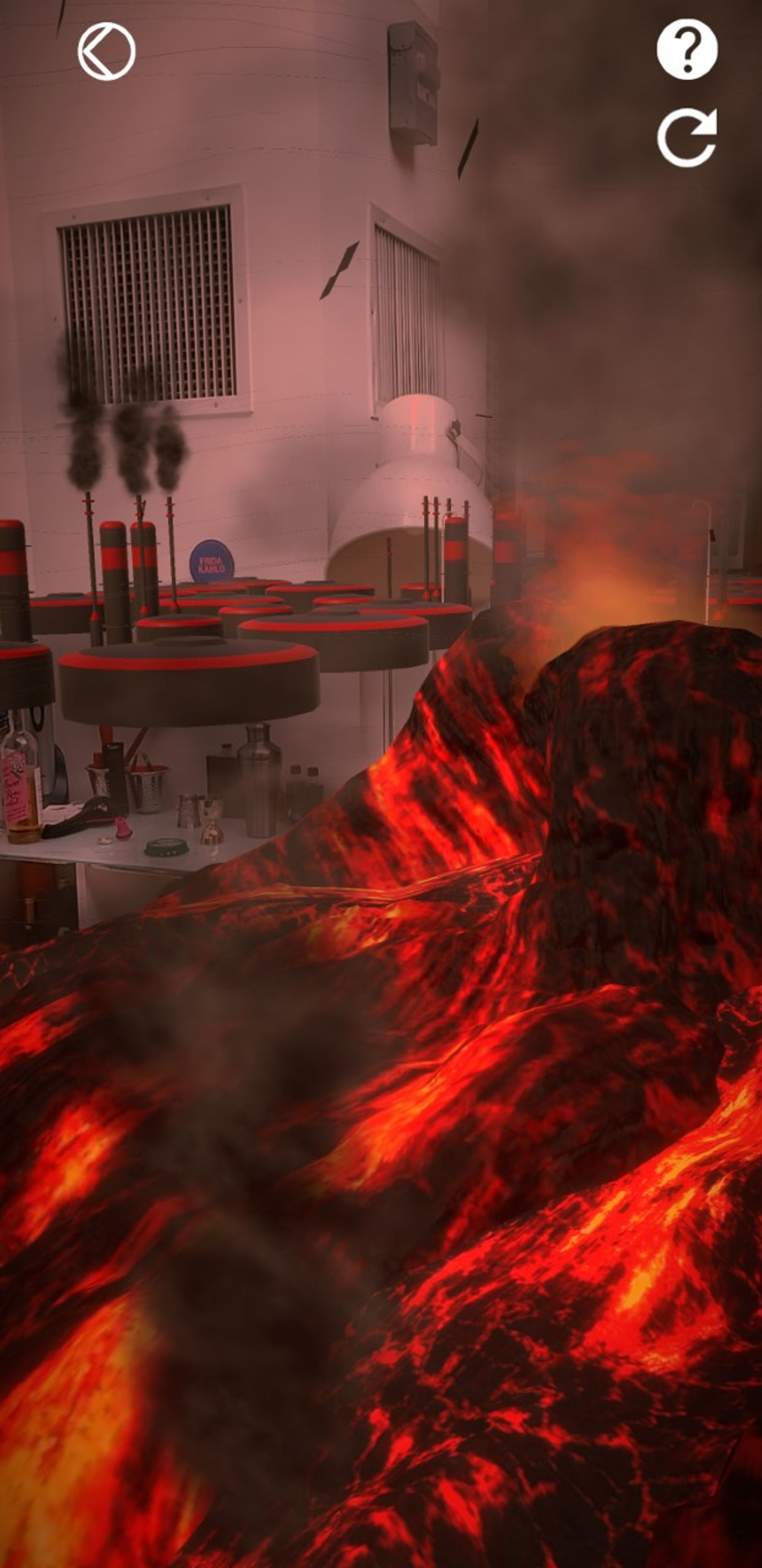
The floor becomes lava with smoke and debris covering: Rebekah Ubuntu's Despair, Hope and Healing
Carole Chainon: XR is overall aptly used here. Unfolding Shrines offers four interactive shows which make full use of the space the medium has to offer. At one point, I am in the colourful and bright room, the next I am under the M train, then the floor becomes lava with smoke and debris covering my living-room. I felt a bit let down by the use of the medium in Mansions of Mist 1 due to the excessive reading displayed in PowerPoint-slide format. Audio would have been a possible alternative with words on the wall to highlight a few points.
Dhiren Dasu: The works by Rebekah Ubuntu, Sophie Helf, and Jason Wilsher-Mills lend themselves very well to the AR format. Navigability, visuals and audio are used successfully to transport users into their worlds. IMHO, the experience In Real Life (IRL) would suffer from the presence of other humans! These pieces work well since they take one into an entire mise-en-scène that the artist intended, with no distractions.
Eron Rauch: There’s this odd visual continuation from the earliest days of this panel reviewing Olafur Eliasson's Wunderkammer that finally coalesced while looking at part two of Rebekah Ubuntu’s Despair, Hope and Healing: the grass modelling and shading is shared by almost all other AR I’ve seen. Are we seeing a certain subset of AR art experiences formulating their own aesthetic genre tropes that involve a certain polygonal reference to natural forms, but on closer inspection also resembles nothing of the sort, fully alien, growing, flowing, shining glossy transmissive psychedelic inner glow on my table, hardwood, bookshelf, cat?
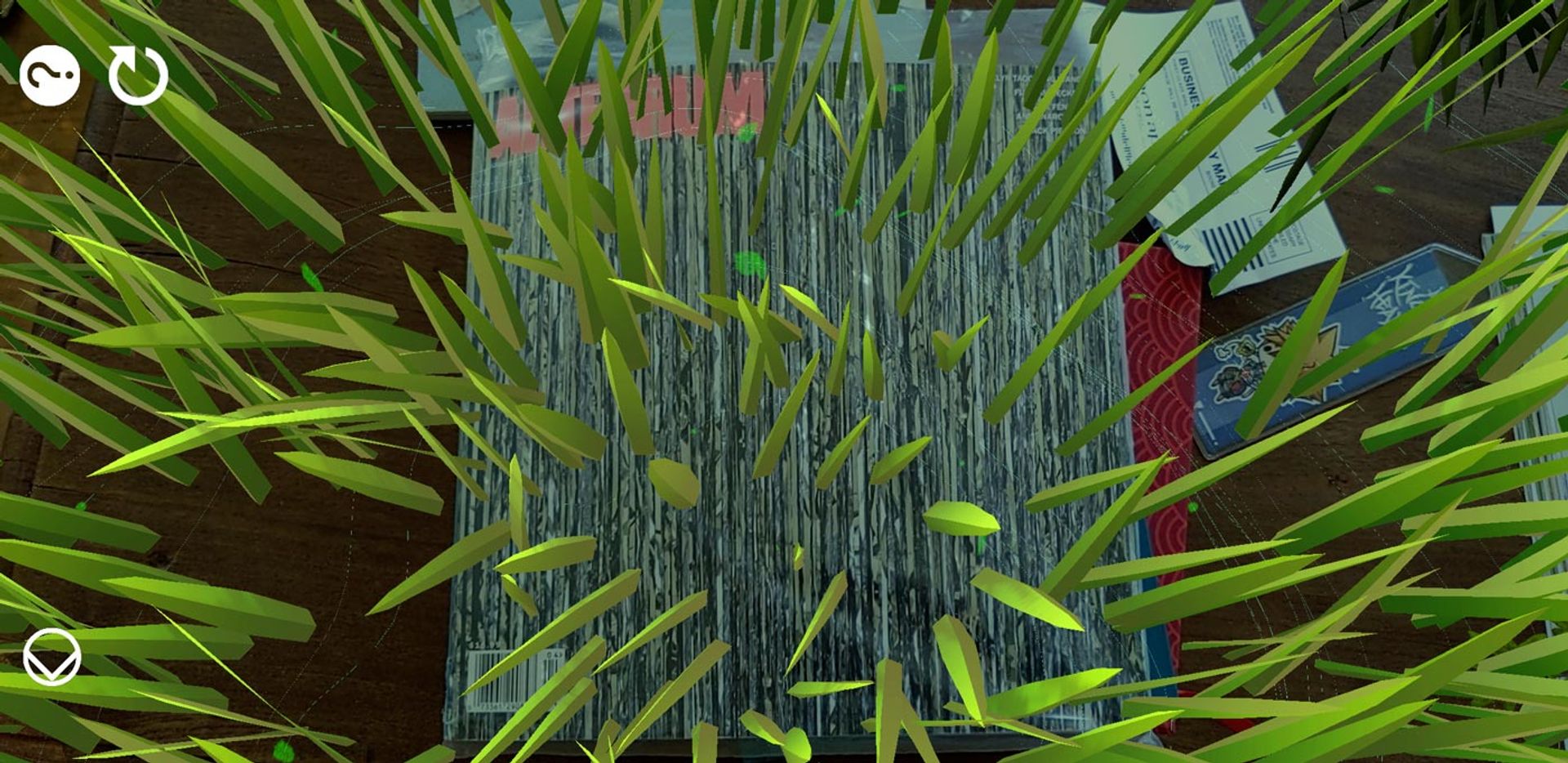
Polygonal reference to natural forms: The grass modelling and shading in Rebekah Ubuntu’s Despair, Hope and Healing feels like part of a pervasive trope in XR art
Does it break new ground technically?
Unfolding Shrines has some of the most ambitious utilisation of AR we’ve seen ... more akin to VR.Eron Rauch
Carole Chainon: The app uses AR tap-to-place features to take us into new dimensions, which is a well-established practice now but at times you’re left to wonder whether it is working when tapping on the pin doesn’t place anything or pressing the refresh button leaves you with a black screen, prompting you to close the app and restart all over again.
Dhiren Dasu: I did not see any novel approaches to the AR experience here. Pretty standard operating principles in use here.
Eron Rauch: Unfolding Shrines has some of the most ambitious utilisation of AR we’ve seen. Yes, there are four artists working in very different modes, but they each stretch out in ways that feel true to their practices and generate immersive worlds more akin to VR. Though I am a bit curious why these works don’t have VR versions, as they would, for the most part, only have their sprawling spaces more richly and openly experienced in that way. (See my answer to the next question for why I think this might be important for artists using AR to consider.) One technical note coming from the video games space is that some of these installations can suffer from very serious frames-per-second drops and audio fragmentation even on a new phone, so I would encourage arts AR experiences to work harder on optimisation.
What does it say to you about the future of the medium/art form/use of XR within the art world?
One unifying theme I felt was in the way hybrid digital graphics technologies can be leveraged to introduce maximalist kitsch installations into our personal spaces and how that can almost feel like an uncanny intrusion.Eron Rauch
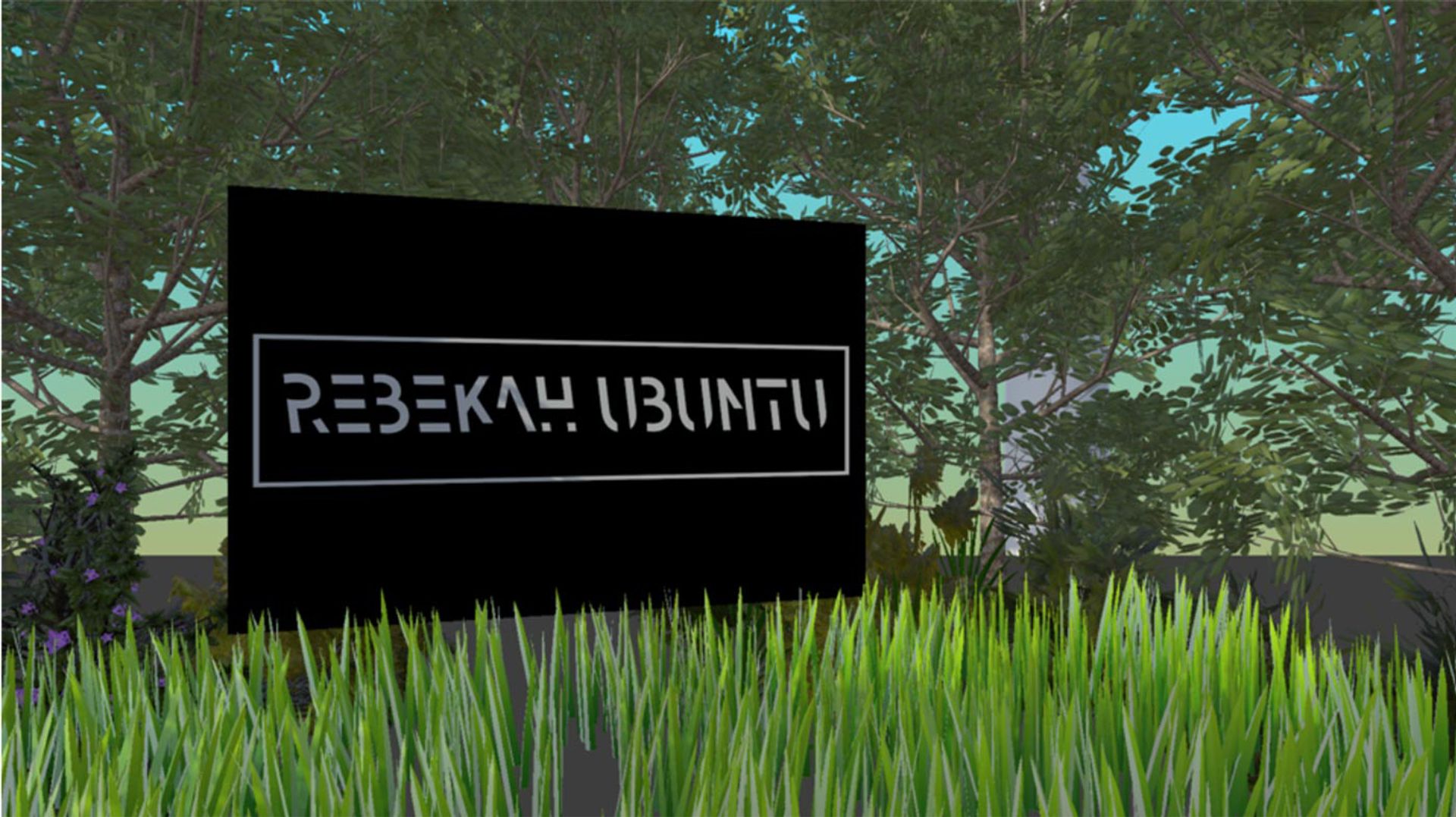
Relentless cybernetic resurfacing of my space: Rebekah Ubuntu's Despair, Hope and Healing
Eron Rauch: One unifying theme I felt was in the way hybrid digital graphics technologies can be leveraged to introduce maximalist kitsch installations into our personal spaces and how that can almost feel like an uncanny intrusion. With Wisher-Mills, Helf, and Ubuntu’s, relentless cybernetic resurfacing of my space, replacing it with earthquake-cracked drywall sprawling stimuli, colour, light, and alternate but permeable geometries, create a curiously claustrophobic and anxiety-inducing headspace. This “uncanny intrusion” effect of AR works in our home spaces is interesting to me, because visiting Cao Fei’s RMB City—in Second Life back in 2009—for instance, felt excitingly expansive and open, despite being a complete sensory-architectural jumble confined to a 17-inch laptop screen. Uma Breakdown’s work certainly has kitsch and shocks of digital-only saturated colour intruding into space, but the way it functions is much closer to a 2D screen interface. I wanted to dislike it and label it as somehow unambitious compared to the maximalist graphics-card-melting flexing of the other three works, but landing on it fourth, I encountered a moment of quiet reading, one that felt oddly intimate in a way that somehow tied together the four works like a postlude.
The XR panel's ratings
Carole Chainon gave a rating of 3/5 stars.
Dhiren Dasu gave a rating of 3/5 stars.
Seol Park gave a rating of 3.5/5 stars.
Eron Rauch gave a rating of 5/5 stars.
Giving an overall panel rating of 3.5/5 stars.
The Art Newspaper’s XR Panel
Gretchen Andrew uses her vision boards to hack systems of power with art, glitter and code. Her next exhibition is with Annka Kultys in April 2021.
Carole Chainon is the co-founder of JYC, a XR development and production studio based in LA with a presence in Europe, creating XR experiences for the entertainment and enterprise sector. She is also a Spark AR Creator.
Dhiren Dasu is a digital media creator and consultant. His areas of speciality include photography, film, virtual space, graphic design, visual effects, animation, and audio production. Dasu, in his fine art persona as Shapeshifter7, makes artworks that echo and recompose the architectural spaces he photographs, turning them into immersive spaces while exploring the nexus of photography, collage, symbols, and perception.
Seol Park bridges technology, art, and branding. After working with Microsoft and INTEL, she now guides global branding at LG with emphasis on digital and cultural engagement. Her work in XR has appeared in Media-N, ABC TV (Australia), The Southern Star (Ireland), and more. She was named in Sotheby's Institute's "4 Under 40" in 2019, and currently serves on the Board of Trustees for The American Folk Art Museum.
Eron Rauch is an artist, writer, and curator whose projects explore the infrastructure of imagination, with a focus on subcultures, video games, and photography history. He is the founder of the website Video Games for the Arts, writes for the video game industry, and teaches photography at CalArts. His photo book about virtual Tokyo, Such is the Power of the Empty Lot, was published alongside Heterotopias volume 7.


